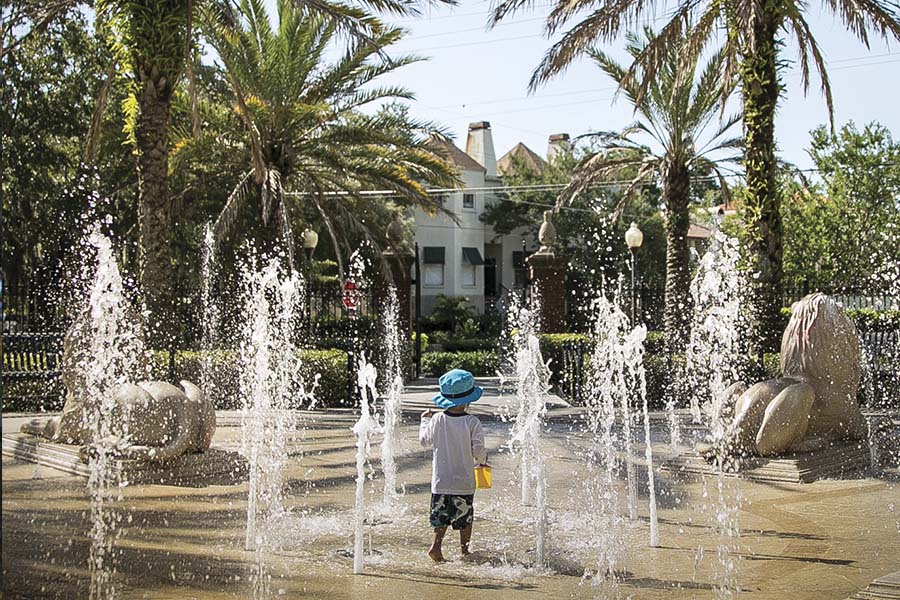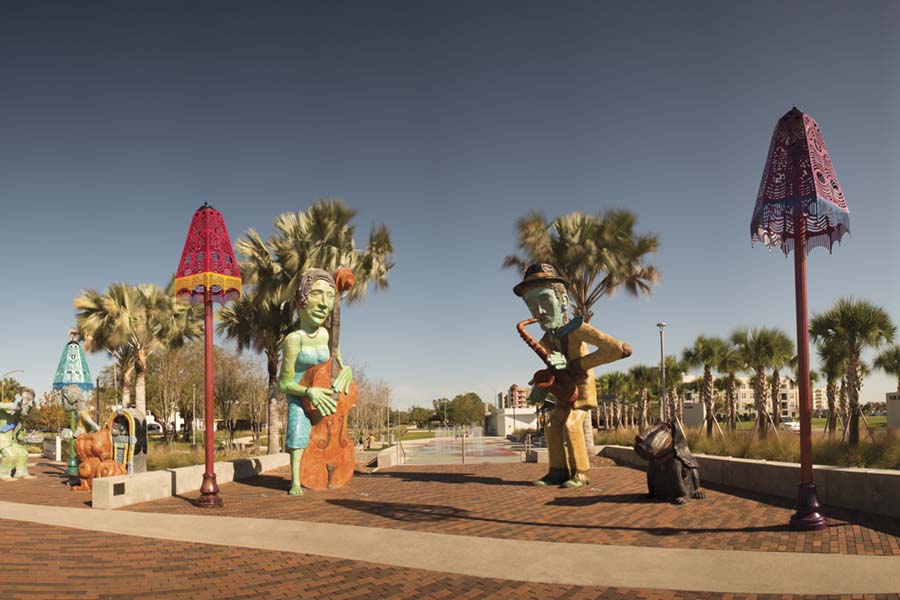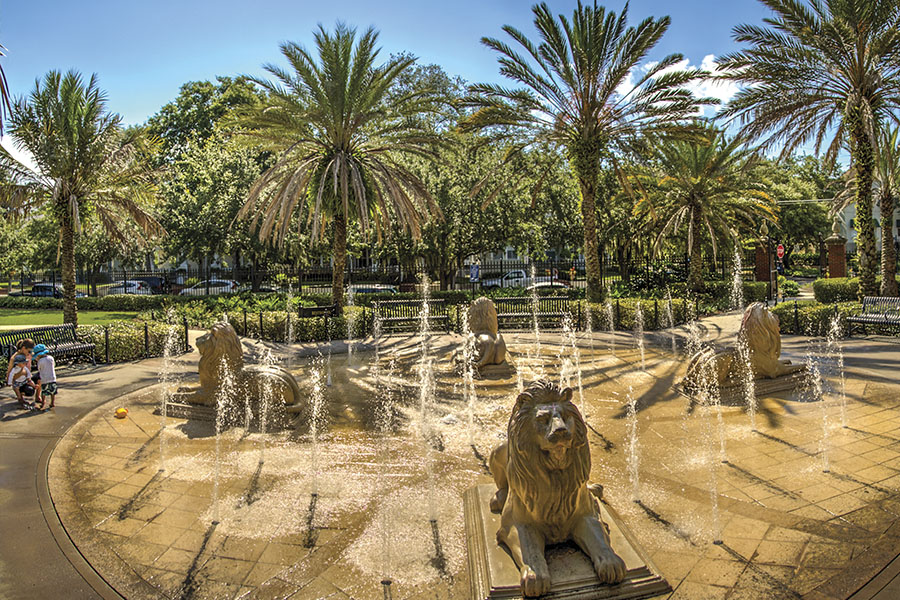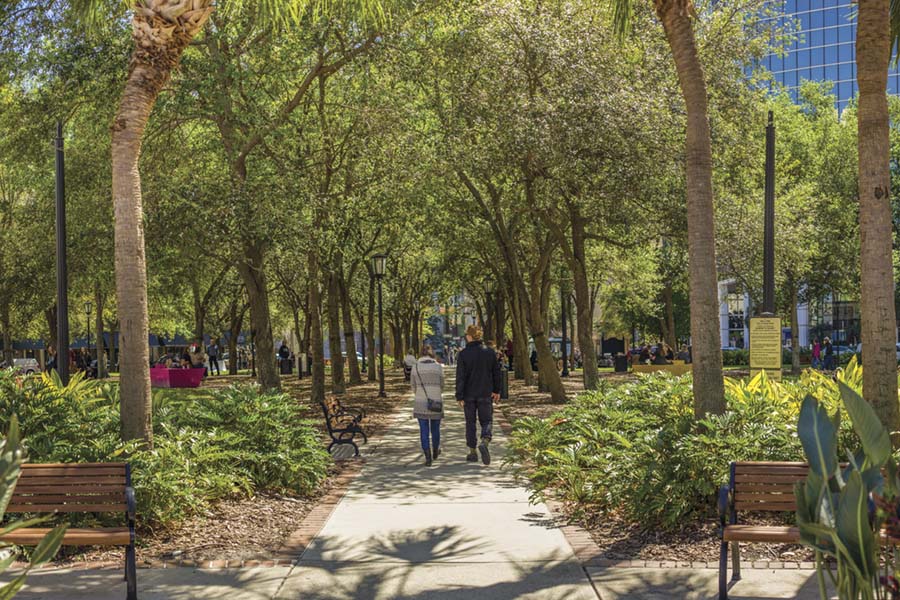

Perry Harvey Sr. Park: 900 E. Scott St.
Perry Harvey Sr. (1908-1972)
Perry Harvey Sr. was born in Georgia and moved to Tampa in 1928. When he began working on the city’s docks that same year, he did not let the poor working conditions and low pay bring him down. Instead, he founded the International Longshoremen’s Association 1402 Union and devoted himself to improving the lives of his fellow longshoremen. Harvey was always looking out for his co-workers, friends and neighbors and was known to help those in need. He was influential in Tampa’s civil rights movement and served on the Florida Bi-Racial Committee. He also helped desegregate the Hillsborough County school system and sought educational opportunities for all children in the community. Harvey believed in early education, and his vision helped develop the Head Start program, which now helps prepare low-income students for school nationwide.

Kate Jackson Community Center at Anderson Park: 821 S. Rome Ave.
Kate Jackson (1857-1940)
Kate Jackson grew up in Tampa during a time when women had few rights and were not expected to be business leaders. However, she was an integral part of Tampa’s growth and success and worked tirelessly for her beliefs. In 1910 she founded the Tampa Civic Association, an all-female group that created the city’s recreation department and library and lobbied for paved streets and the city’s first water and sewage systems. An officer in the Florida Federation of Women’s Clubs, she was instrumental in purchasing a large tract of land that later became the Everglades National Park. A devout Catholic, she was also instrumental in the creation of the Academy of the Holy Names. Her family had settled in Tampa early, so they owned several blocks of real estate downtown. Jackson was a shrewd businesswoman and continued developing their land and acquiring assets, eventually becoming a major shareholder in Citizens Bank.

Curtis Hixon Waterfront Park: 600 N. Ashley Drive.
Curtis Hixon (1890 – 1956)
Curtis Hixon was born in Alabama and moved to Tampa after graduating from pharmacology school. He worked as a pharmacist until he enlisted for service in World War I. After returning from war, Hixon became interested in local politics. He served on the Tampa City Council and was elected to the Hillsborough County Commission before being elected the 45th mayor of Tampa in 1943. The city was facing many challenges when Hixon became mayor. Residents had to ration gasoline and food during World War II, prostitution and illegal gambling were out of control, and the city did not have the infrastructure to support its growing population. By the end of the war, under Hixon’s leadership, Tampa expanded and grew while improving water, sewer and other structural systems. He was also instrumental in the development of Tampa International Airport, the Port of Tampa, the University of South Florida and Tampa Industrial Park. Hixon served four terms before dying of heart failure while still in office.

Lykes Gaslight Park: 241 E. Madison St.
Lykes Family (1895-Present)
In the 1870s, Dr. Howell Tyson Lykes moved from South Carolina to Hernando County to manage his family’s 500-acre cattle farm. He expanded the operations to include growing citrus, and the family started the first school in the area. In 1895, he moved to Ballast Point in Tampa with his wife and eight children and grew the family fortune by shipping cattle to Cuba. His seven sons joined his company, and by 1933 they had made Lykes Bros. the largest steamship interest in the Gulf and New Orleans trade. The company grew to have interests in land, citrus, phosphate mining, timber, sugarcane, a major shipping line, cattle and meat processing, banking and insurance. The Lykes family regularly participates on civic boards and in community causes, like sustainability and land stewardship.